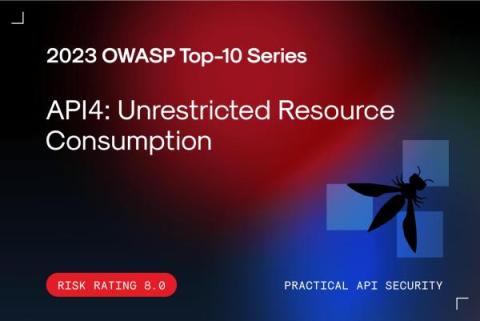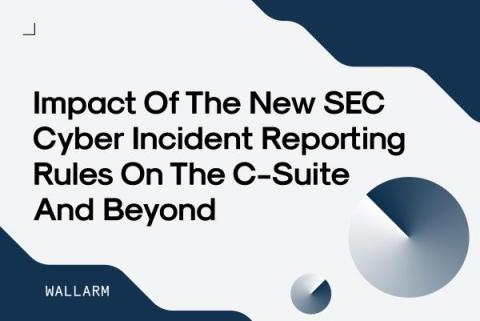Security | Threat Detection | Cyberattacks | DevSecOps | Compliance
API
Orphan APIs can lead to a host of unnecessary issues such as misallocated resources, maintenance issues, wasted development and testing time, and issues with maintainability, scalability, security and usability. Watch this quick demo to learn how Wallarm API Discovery helps you identify and manage any Orphan APIs in your portfolio.
2023 OWASP Top-10 Series: API4:2023 Unrestricted Resource Consumption
Welcome to the 5th post in our weekly series on the new 2023 OWASP API Security Top-10 list, with a particular focus on security practitioners. This post will focus on API4:2023 Unrestricted Resource Consumption. In this series we are taking an in-depth look at each category – the details, the impact and what you can do about it.
What is Graph QL?
GraphQL is a query language for APIs that has become increasingly popular among developers working on large-scale web applications. Created by Facebook engineers in 2015, it’s positioned as a more robust alternative to RESTful APIs. When compared to REST APIs, GraphQL has a few key differences. With RESTful APIs, you have to define how you're going to make requests to each individual endpoint. You have a list of resources and verbs (methods) available to select from in order to retrieve or manipulate data from the server, and all transactions include all fields.
Horizontal vs Vertical Scaling: Which One is Better for APIs?
As the developer community is well aware, demand for application programming interfaces, or APIs, is not static. It usually ebbs and flows over time. For instance, during the holiday season, there could be a significant spike in traffic, requiring more API capacity to handle the increased load. To meet such an increase in traffic, system admins have two choices when it comes to scaling an API. They can go with horizontal scaling, which refers to adding more API instances to a cluster. Or vertical scaling, which means adding to the computing capacity of the machine that supports the API.
Impact of the New SEC Cyber Incident Reporting Rules on the C-Suite and Beyond
We recently hosted a compact and very engaging panel discussion about the new SEC Cyber Incident Reporting Rules due to come into effect later this year. We were fortunate to be joined by two well-known experts: In the post, we will *not* rehash what was said in the panel discussion. If you did not get to attend the live session, we invite you watch it on-demand – it’s 30 minutes well spent!
Uncover API Vulnerabilities with Posture Management
API posture management ensures that you put your best foot forward when it comes to API security. It combines API discovery with sensitive data identification and vulnerability detection, so your remediation efforts focus on the most critical APIs first. The ability to identify API vulnerabilities and remediate them quickly allows you to take corrective action before an attack occurs.
What is API Runtime Protection?
API runtime protection is the process of securing APIs as they operate and manage requests during their normal functioning. Blocking runtime API threats requires an understanding of the context of operations for each individual API, including API access, usage, and behavior. In addition, runtime protection should log API traffic, monitor sensitive data access, detect threats, and block or remediate attack vectors.
What is API Discovery?
In order to protect your entire API estate—and your business—you need to be able to discover all APIs in use of every type using automated processes. It’s essential to know which APIs you have exposed at all times—this is sometimes called an inside-out approach to API discovery. However, it has also become critical to discover potential attack vectors that make APIs vulnerable using an outside-in approach.
What is a Web Application Firewall (WAF)?
A web application firewall, better known as a WAF, is a security device designed to protect organizations at the application level. WAFs achieve this goal by monitoring, filtering, and analyzing traffic between the internet and a web application. Acting as a reverse proxy, the purpose of a common web application firewall is to shield applications from malicious requests.
What is API Management?
Application programming interfaces, or APIs, connect software applications and data sources to one another. Given the breadth of their reach, it’s wise for organizations to engage in proactive API management, which keeps APIs running reliably and securely. API management incorporates many different tasks and processes. It spans API creation and API publishing and continues through the full API lifecycle through retirement. API management also involves monitoring APIs for performance and adherence to service level agreements, or SLAs.











